What does a plant baptisy look like? How to grow it? What are the therapeutic properties of baptisy.
Contents
- Plant Baptisia: species, photo. Baptistry Laktea, blue, Lemon Meringue, Australis, Alba, dye, southern
- Flower Baptisia room: landing and care at home
- The healing properties of baptisia. Baptisia in homeopathy: indications for use
- VIDEO: BAPTISIA
Baptisy is a plant that is valued by man for its distinctive decorative and healing properties. Attractive bushes are widely used for landscaping of parks, gardens, local areas. Also baptisy is a raw material for pharmacological and homeopathic remedies for many diseases.
Plant Baptisia: species, photo. Baptistry Laktea, blue, Lemon Meringue, Australis, Alba, dyeing, southern
In the forest-steppe zone of North America and Europe, as well as in Central Asia, you can see tall lush bushes with unusual flowers forming racemose inflorescences. This is baptisy.
The plant belongs to the family Legumes. Its name is of Greek origin."Baptisia" is translated as "immerse", "dip".
IMPORTANT: Another option is to "paint".He has a right to exist, since some species of baptisy do have the property of secreting a blue paint that is used to color the tissues.
To date, about 40 species of Baptisia are known. The general properties of these plants are as follows:
- Baptisy is a perennial bush. In nature, it grows thickets, in landscape design it is used to create rock gardens, flower beds, solitaires and hedges.
- Depending on the species, the shrub bush can reach a height of 50-180 cm.
- Baptisia is a beautifully-flowering and ornamental-deciduous plant simultaneously. This means that it does not lose its attractiveness even when it fades, thanks to the very attractive looking shamrocks of bluish-green color. The length of leaflets is up to 8 cm, width is up to 2 cm.
- In summer, from July to August, blossoming of baptisy begins - on the bushes appear inflorescences up to 30 cm long. They consist of 2-3.5 cm flowers. Depending on the species, the flowers have a cream, yellowish, blue-violet, green-purple, blue-green, blue color. The flowering period of baptisy lasts 20 days.
- At the end of the flowering period, the flowers of the Baptisia form pods filled with 4-6 round seeds.
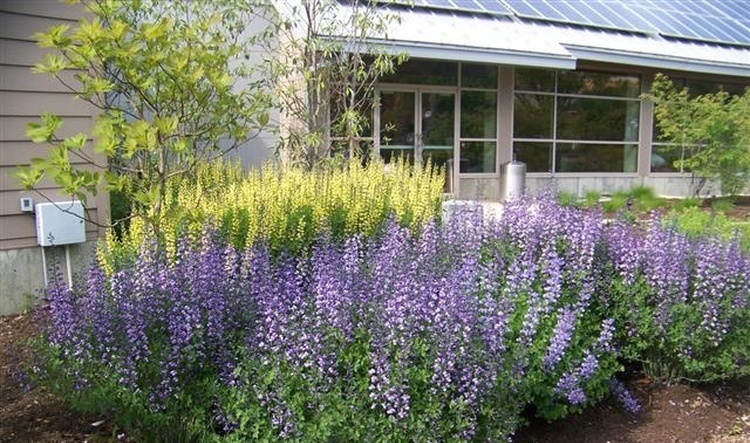 Baptistry in the garden.
Baptistry in the garden. 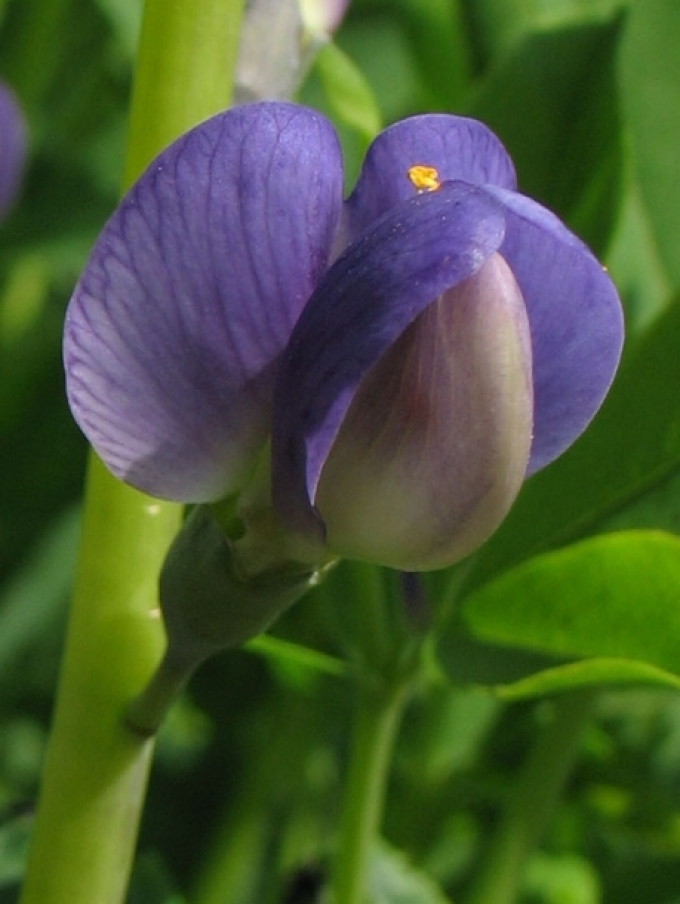 Flower of Baptistry. Pods with seeds on baptisia.
Flower of Baptistry. Pods with seeds on baptisia. The most attractive and useful for humans are the following types of baptisms:
Baptisia australis( South) .This species is the most common. It looks like a ball-shaped tall bush up to 1.5 meters in height. The stems of the plant are bluish-gray, the leaves are characteristic blue-green. The flowers are blue, 4 cm in diameter. Southern Baptisia is common in the southern territories of North America. It has been used since ancient times to produce an indigo dye.
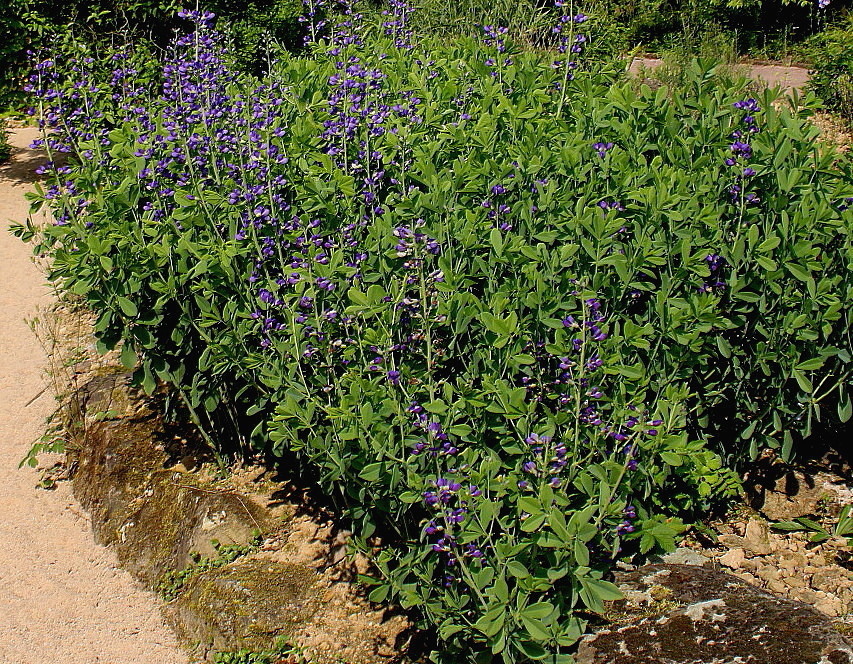 Baptistry South.
Baptistry South. Baptisia tinctoria( dye) .This species is somewhat smaller than the southern baptisy, it grows to a height of 1 m. The flowers are also slightly smaller - up to 3 cm. From the color - cream, yellowish, blue-green.
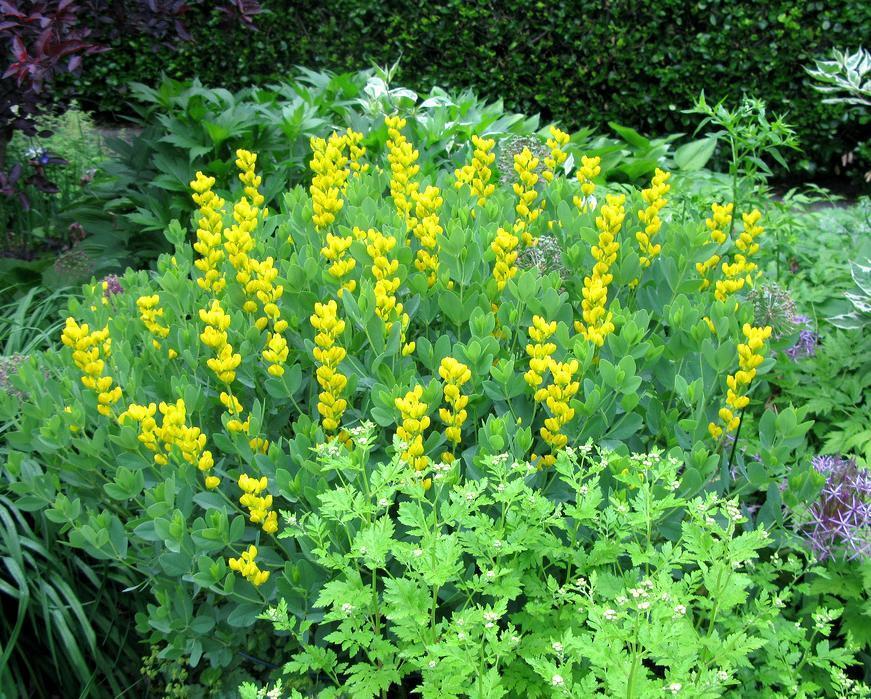 Baptistry is dyeing.
Baptistry is dyeing. Baptisia leucantha( leukantha) .The largest species of Baptisia. The height of the leucant is up to 180 cm. The egg-shaped flowers are relatively small, up to 3 cm. Their color is white and purple.
 Baptism of the Leucant.
Baptism of the Leucant. Baptisia Lemon Meringue .It is a hybrid grade of Southern Baptisia, bred for decorative purposes. Its distinctive feature is bright yellow( lemon) flowers.
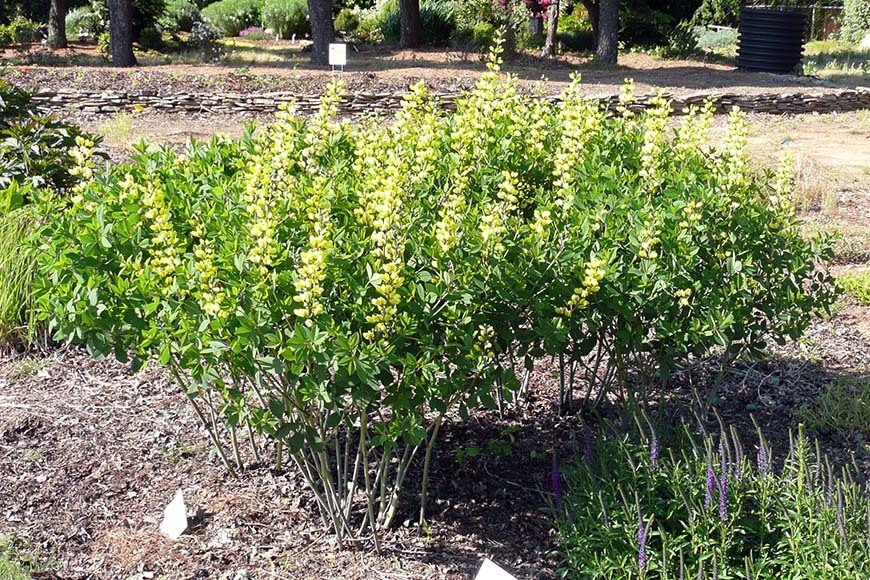 Baptisia Lemon Meringue.
Baptisia Lemon Meringue. Baptisia lactea ( Alba, white).Shrub to 1 meter with white flowers.
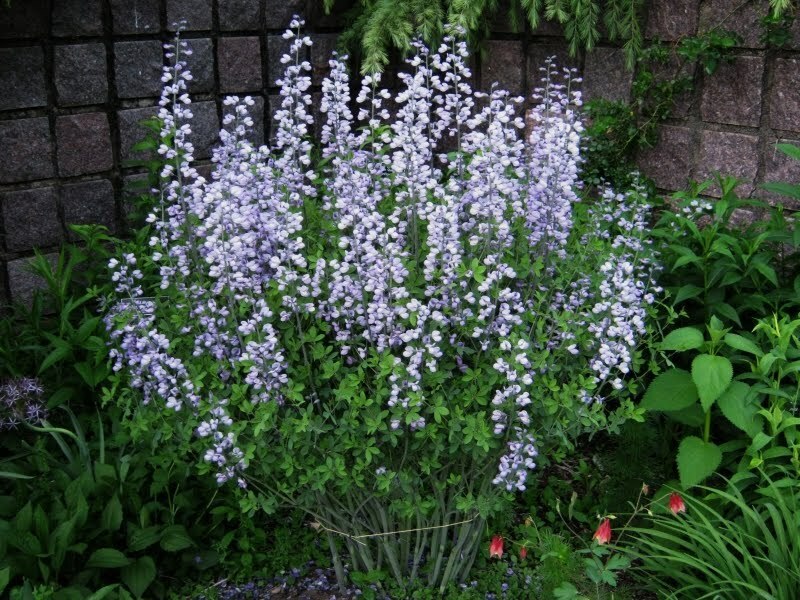 Baptisy white.
Baptisy white. Flower Baptisia room: planting and care at home
Plant baptisia unpretentious, able to endure even severe frosts up to - 30 degrees. Therefore, it is often planted in parks, gardens, summer cottages and adjacent flower beds.
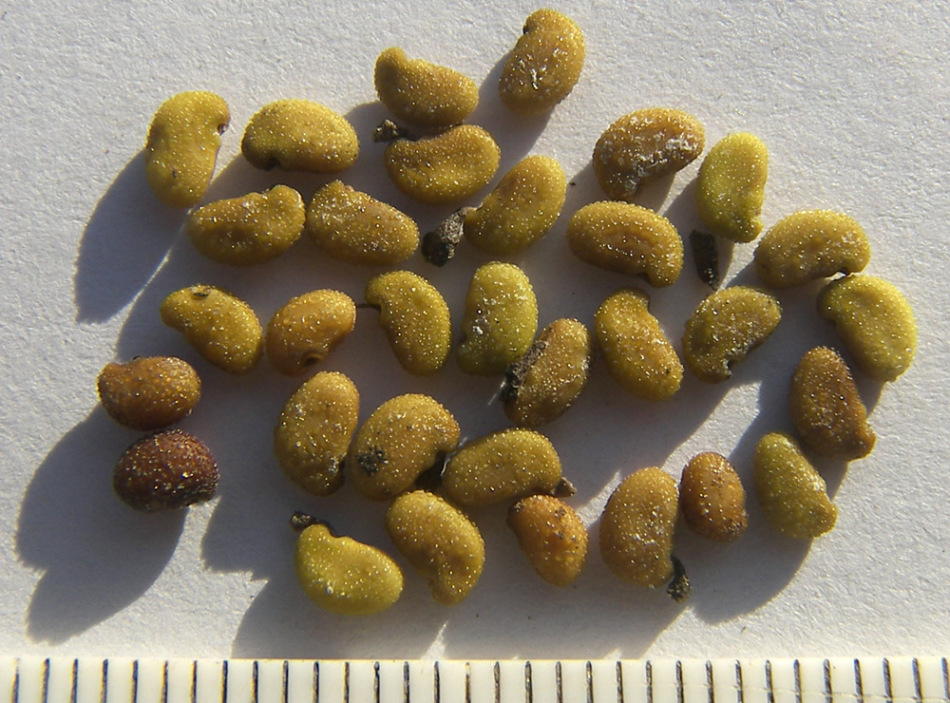 Seeds of Baptisia.
Seeds of Baptisia. As a matter of fact, bapisia can grow anywhere, but for optimal flowering the optimal conditions are:
- clay soil
- good sunlight
- wind resistance and lack of drafts
If you plant a baptism in a dacha or in a garden, do not think that caring for ittakes you a long time:
- Baptisia normally suffers a moisture deficit, water it only in a very dry summer.
- Baptisy also does not need fertilizing fertilizers.
- The plant is not afraid of pests and rarely gets sick.
IMPORTANT: The only characteristic of care is that the soil under the baptisal bushes should be well drained, since the plant does not like an excess of moisture, from which powdery mildew may appear on it.
In the summer the baptisy blooms, and then the site spreads lightly, unobtrusive aroma - a mixture of orange and vanilla smells.
After the pods are fastened on the bushes, do not wait for them to turn black, if you want to multiply the plant with seeds. Before planting in the soil, grind the seeds with something hard, for example, sandpaper. The depth of seeding is 3 cm. If you want a baptise grown from seeds to blossom next year, plant it in the fall in a pot of seedlings, and in spring transfer it to the ground.
 Baptize for seedlings.
Baptize for seedlings. IMPORTANT: You can also propagate baptism by dividing a bush.
The healing properties of baptisy. Baptisia in homeopathy: indications for the use of
Many plant species are poisonous, at the same time, dyeing baptisy is used as a medicinal raw material.
IMPORTANT: Wound healing properties of the roots of Baptisia were discovered by North American Indians hundreds of years ago. They treated wounds, ulcers and skin inflammations.
Today, due to numerous scientific researches, the following medicinal properties of the plant have been revealed:
- anti-inflammatory
- immunostimulating
- laxative
- analgesic
- antimicrobial
- anticancer
IMPORTANT: Baptisia accelerates the formation of antibodies to viruses and stimulates specific immunity( affects beta-lymphocytes), therefore it was injectedin the composition of immunostimulating herbal preparations. An example is Esberitox, which is used to treat viral infections in children aged 3 years and adults.
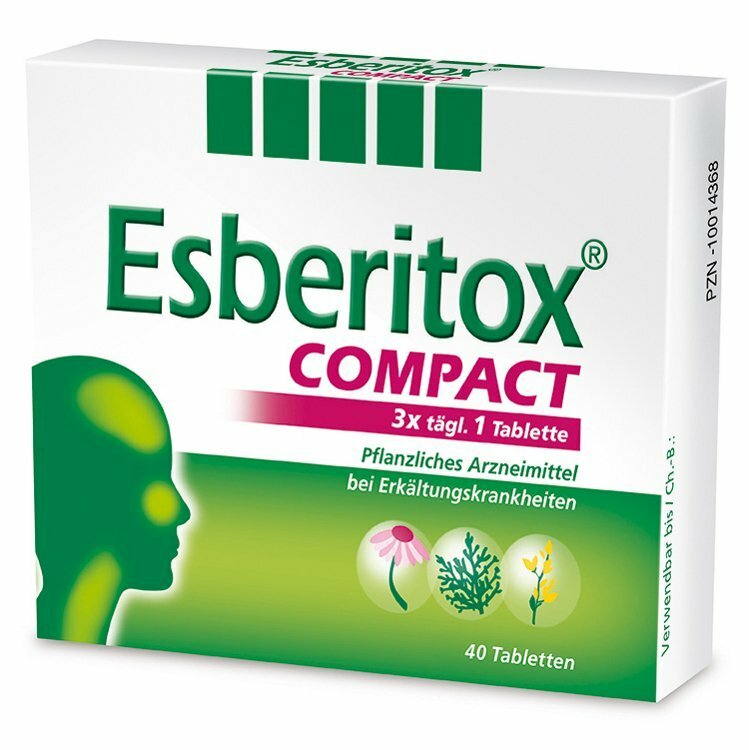 Preparation with baptisia extract: Esbéritix.
Preparation with baptisia extract: Esbéritix. Also, tinctures of fresh and dry plant roots are used for:
- release of constipation
- with toothache
- with
- fever in complex treatment of cancer
In the 19th century, baptisy was used in homeopathy. Alkaloids in the plant became valuable:
- of cystine
- lupanin
- anagirin
Homeopathic plant-based preparations are used for the treatment of mainly inflammatory and infectious diseases:
- influenza, tuberculosis, diphtheria, other respiratory diseases
- dysentery
- typhoid abdominal
- stomatitis
- syphilis
- thrush
- hepatitis
Also the root of the baptisy is treated with stroke, nosebleeds, eye diseases, constipation, hemorrhoids, and some other diseases.
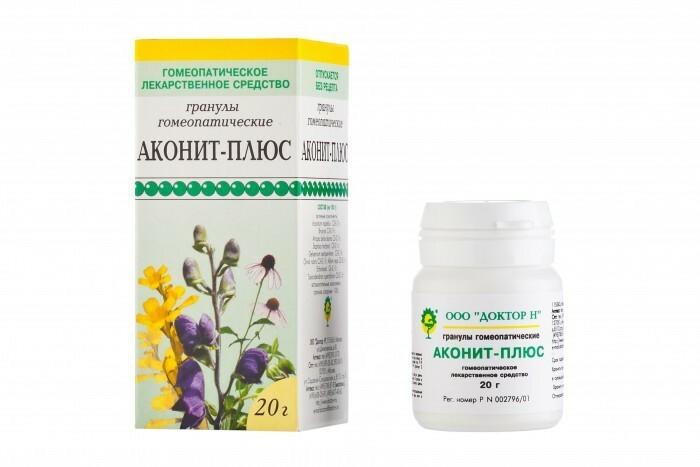 Homeopathic preparation with Baptisia extract: Aconite - Plus.
Homeopathic preparation with Baptisia extract: Aconite - Plus. 